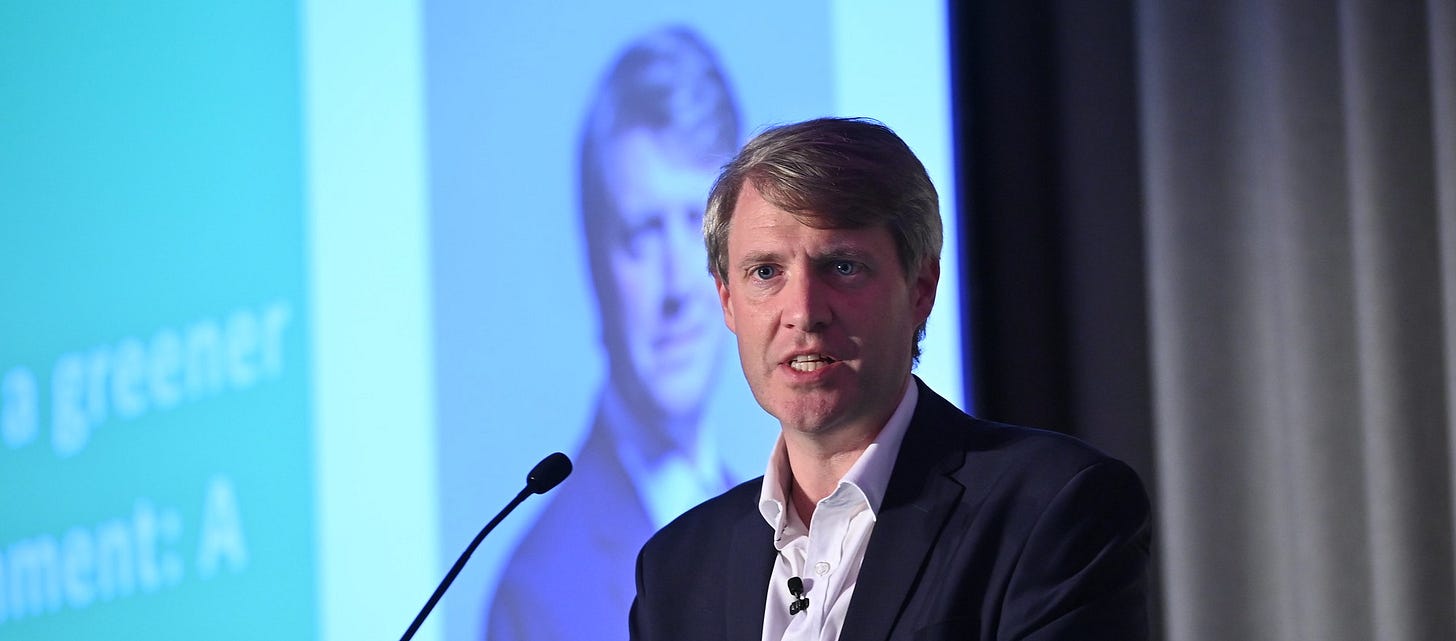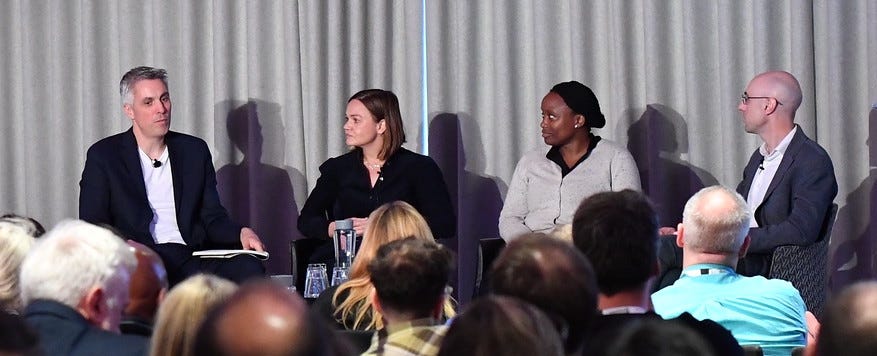AJ Retrofit Live 2023
The best of Retrofit and Circular Economy
This was a well timed event, given Rishi’s announcements two weeks ago and his confirmed scrapping of HS2 (Bham > MCR) since then.
The Rt Hon Chris Skidmore OBE MP (Conservative) - known for being the minister that signed the UK's Net Zero pledge into law - gave a keynote speech and he made it pretty clear that he thinks Rishi damaged the country’s reputation in terms of Net Zero. Since then I watched Rishi on Laura K, who (whilst avoiding answering most questions) insisted the country is on track and ahead of everyone else.
Back to the event, and Chris said that it’s a shame NZ is being portrayed as a cost, but acknowledged we are heading into an election period and that Rishi is trying to ‘shore things up’… isn’t it a shame that our political cycles and individual ambition often seem to get in the way of those we elected making good, well timed decisions for the country.
There was talk of trying to de-politicise NZ which, in a question to Chris, Will Arnold described as a societal issue not a tech issue. Chris was suggesting it needs cross-party support and noted the unfortunate situation that some investors are currently pausing until policy is clearer. However on a more positive note for those at the event, Chris reminded them that their expertise and services are required not just domestically but also internationally, and so they should not take their foot off the gas.
Some of the other highlights from the event were hearing from Tor Burrows on a panel discussing the opportunities of Retrofit and listening to Charlie Wedgwood tell the audience about how we can deconstruct for reuse rather than demolish.
Opportunities in retrofit
Will Hurst, Managing Editor of the AJ and mastermind of RetroFirst Campaign, chaired the expert panel of Yetunde Abdul (UKGBC), Tor Burrows (Grosvenor) and Thibault Nuge (Patriarche).
Tor opened by talking of the three key levers: 1) supply chain, 2) embodied, and 3) operational carbon. She focused on how Grosvenor is investing £90m in a retrofit fund to implement operational improvements across the portfolio and also educating tenants and building managers on how to run buildings more optimally. A critical message coming from Tor was that she believes investment must be made to stay ahead of legislation but also to maintain the rent levels (= asset value)… the cost of doing nothing is greater than the cost of investing and improving.
Thibault talked about the need to intensify the use of our existing buildings, 40% of which he said are built before 1980.
I found the discussion on office versus other uses to be quite interesting. The dynamics are different between use classes, for example we talk of stranded assets in office, but rarely do so for residential, despite resi being arguably the biggest challenge for NZ with its huge number of small buildings, most of which are owned by the general public. The demand signals for change appear stronger for office, where the tenants have their own corporate policies and desires to retain staff through good quality facilities. But where is the demand for resi, especially when households are feeling the pinch?
Yetunde described buildings as living things and stressed that operational is a crucial part of how we assess buildings (as part of WLCA). This was in response to a question of whether WLC was the right way to arrive at a decision for a project, which triggered another question of whether we should be focusing more on embodied and the ‘now’. I’m not sure we got an answer, other than agreeing that now is important.
And who can talk about retrofit without pointing out the seemingly unfair tax bias towards rebuilding? The group all agreed that this is providing the wrong incentives and Thibault gave examples of French policy which he feels drives better decision making.
It’s pretty clear that big shiny UK projects (often in London) lead the way in terms of ambition, targets and innovation. Let’s face it - this is the formula one of the industry. And just like forumla one, the good stuff ripples outwards and spreads into the wider industry… over time. I heard the panel talk about how this can all work ‘in the countryside’. Thibault said at the moment there is no carrot or a stick in the countryside, and Tor called on business leaders to help drive change in the regions. Something to remember though, is that just like the ripples from formula one, you don’t need to change your entire car - maybe there is an improvement on the brakes, or the engine, or tyres. So Tor pointed out that impactful, small, cost effective and easily implemented changes are key, her example being changing LED lights which can be done quickly and doesn’t require waiting for vacant space tied to a lease event.
Sustainable approaches in deconstruction
Switching gears, it was great to hear from someone with whom I often speak about deconstruction. Charlie (McGee) talked about the historic role of the Master Builder and Mason and how these individuals were literally masters of the buildings they created and the materials they used. These days, we don’t seem to have a ‘master’ and instead have a web of complex supply chains with layered responsibility. Additionally, there is the question of whether we have any Masons who have a deep understanding of specific materials.
He stressed that to know how to deconstruct a building, you need to know how it was put together, and of course the complex approach to putting buildings together somewhat increases that challenge! He has a simple three-part approach to this: 1) gather data/info on the building, 2) go and look at it to understand it, 3) establish what can be (efficiently) extracted.
There’s no easy answer to this, but hearing Charlie talk reminded me of what I already know… that the industry will adapt and change. The days of pure demolition are numbered and if you want to play in the formula one space in the future you’d better be thinking about deconstruction and spotting opportunity for material extraction and reuse.
Finally, I can’t write this without noting the mention of Circular Steel which Charlie and McGee were at. My event in June showcased how steel is leading the way and demonstrated how deconstruction rather than demolition is already happening. If you missed it, the full videos and 28 short clips are all on YouTube, links here.






